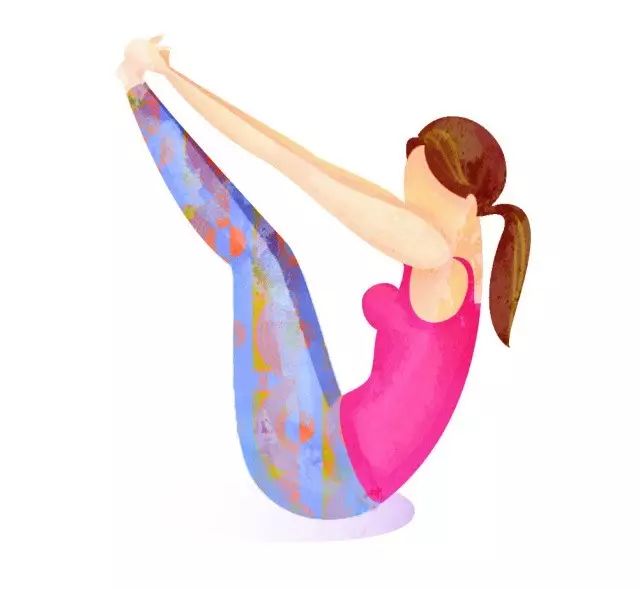Click “Ashtanga Yoga Road” above to subscribe! तस्यभूमिषुविनियोगः॥६॥tasyabh ū The achievement of mi ṣ uviniyoga ḥ yoga (especially the state of meditation) needs to be realized step by step according to the situation of the practitioner.

Yoga Sutra 3.6 We yoga practitioners, especially those who practice soup and flow yoga, should be familiar with vinyasa…

Yes, yes, it is often called “tandem”, We use the “yoga wreath” as a metaphor for vinyasa – a breath, a movement that connects entering a position, a position state and exiting a position to form a “flow” of body movements (you can refer to here for writing the theme article of vinyasa); But maybe few people have heard of viniyasa…

even many people will ask if it is misspelled when they see viniyasa, is it vinyasa? Viniyasa appears in Yoga Sutra 3.6, which means that the cultivation of yoga state (meditation) should be personalized and step by step.

The Sanskrit word viniyoga does not mean a yoga style or anything (although it is often misunderstood as the yoga style of Krishna Mathaya Yoga Institute), but a general application principle of yoga practice, which means that the practice application should be consolidated one step according to the specific situation of the practitioner before moving to the next step.
As a principle, viniysasa is of great guiding significance to practitioners of all yoga styles, including Ashtanga Yoga practitioners.
We can bring the two key points of this scripture about viniyasa in the Yoga Sutra to the yoga mat: you practice what you do, and I practice what I do.
Yoga is a personalized practice meal.
Yoga practice moves from one stage to the next; You can’t eat hot tofu in a hurry, nor can you practice the individualization of yoga.
Once, the inheritance of yoga was completely personalized.
One master instructed one or a limited number of students at a time, similar to the inheritance of many Chinese kungfu; However, in the era of yoga commercialization, the principles of personalized yoga can easily be abandoned.
In addition to the branding of yoga style that conforms to the characteristics of commercialization, the influence of celebrity yoga teachers and fitness culture that focuses on external forms, viniyasa yoga, as a principle of personalized practice, is completely marginalized.
Desikachar, the son of Krishnamacharya, the founder of modern yoga, is a typical advocate of individualized yoga teaching.
He strongly advocates that every student should practice yoga suitable for himself according to his specific situation.
But the funny thing is, Some people in the market call Desikachar’s teaching “viniyasa “Yoga; however, he himself hates branding and branding his teaching ideas and methods; the name viniyoga is too much like a yoga genre, style or brand name; although he sometimes passively allows viniyasa to be used as a proxy for his teaching methods, we should be clear that viniyasa respects individuals and dislikes style.
If viniyasa is also regarded as a style, it is a bit ridiculous Yes.
When we talk about practicing yoga, we usually talk about going to a yoga studio to have a certain type of “yoga class” with many people; But according to the tradition of yoga, yoga practice is ideal to practice in the environment created by oneself; As George Feuerstein, an academic elder of yoga, said, “Yoga is something you do when no one is watching you.”.
Practice is self, personal, and it is to create a space to cultivate your relationship with yourself.
The traditional yoga focuses on cultivating the ability of self practice; In fact, when it comes to Ashtanga Yoga, although many people attach importance to its posture and sequence arrangement, discuss its healing effect, and even value its strong posture, difficult sequence, and dynamic crossing performance aesthetics, I would like to emphasize one of the key points: Mysore practice of Ashtanga Yoga (note that Ashtanga Yoga collective command class is not included) is the only “yoga class” in the market that is similar to the traditional yoga teaching scene; Although the form of this exercise class is also adapted to the commercial environment and the living environment of yoga communicators, the traditional teacher student one-to-one teaching yoga teaching scene is still sealed in the collective practice site, and Mysore’s teaching purpose is not to let students walk through the posture sequence, but to focus on developing the ability of each practitioner to practice in their own family.
In fact, compared with the big class, this kind of personalized exercise guidance has much higher requirements for teachers.
Therefore, I also regret to see that in such a framework, many teachers also fail to implement viniyasa in Mysore class because they lack the ability to teach students according to their aptitude according to their individual conditions.
Instead, they take a prescription given by “guru”, and adjust and teach according to the prescription no matter what the disease is; But this is a digression, because it is the “growing pains” of this class of Atang Yoga teachers, not the fault of Mysore curriculum itself..

